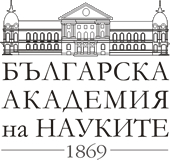
The Particle Physics and Astronomy Research Council (PPARC) was one of a number of research councils in the United Kingdom. It directed, coordinated and funded research in particle physics and astronomy for the people of the UK. Its head office was at Polaris House in Swindon, Wiltshire, but it also operated three scientific sites: the UK Astronomy Technology Centre in Edinburgh, the Isaac Newton Group of Telescopes (ING) in La Palma and the Joint Astronomy Centre (JAC) in Hawaii. It published the Frontiers magazine three times a year, containing news and highlights of the research and outreach programmes it supports.

Cranfield University is a British postgraduate public research university specialising in science, engineering, design, technology and management. Cranfield was founded as the College of Aeronautics (CoA) in 1946. Through the 1950s and 1960s, the development of aircraft research led to growth and diversification into other areas such as manufacturing and management, and in 1967, to the founding of the Cranfield School of Management. In 1969, the College of Aeronautics was renamed the Cranfield Institute of Technology, was incorporated by royal charter, gained degree awarding powers, and became a university. In 1993, it adopted its current name.
Biotechnology and Biological Sciences Research Council (BBSRC), part of UK Research and Innovation, is a non-departmental public body (NDPB), and is the largest UK public funder of non-medical bioscience. It predominantly funds scientific research institutes and university research departments in the UK.

The Haleakalā Observatory, also known as the Haleakalā High Altitude Observatory Site, is Hawaii's first astronomical research observatory. It is located on the island of Maui and is owned by the Institute for Astronomy of the University of Hawai'i, which operates some of the facilities on the site and leases portions to other organizations. Tenants include the Air Force Research Laboratory (AFRL) and the Las Cumbres Observatory Global Telescope Network (LCOGTN). At over 3,050 meters (10,010 ft) in altitude, the summit of Haleakalā is above one third of the Earths's troposphere and has excellent astronomical seeing conditions.

The Bulgarian Academy of Sciences is the National Academy of Bulgaria, established in 1869.
The National Oceanography Centre (NOC) is a marine science research and technology institution based on two sites in Southampton and Liverpool, United Kingdom. It is the UK’s largest institution for integrated sea level science, coastal and deep ocean research and technology development.

The Royal Observatory, Edinburgh (ROE) is an astronomical institution located on Blackford Hill in Edinburgh. The site is owned by the Science and Technology Facilities Council (STFC). The ROE comprises the UK Astronomy Technology Centre (UK ATC) of STFC, the Institute for Astronomy of the School of Physics and Astronomy of the University of Edinburgh, and the ROE Visitor Centre.

The following outline is provided as an overview of and topical guide to astronomy:

The Defence Science and Technology Laboratory (Dstl) is an executive agency of the Ministry of Defence of the United Kingdom. Its stated purpose is "to maximise the impact of science and technology for the defence and security of the UK". The agency is headed by Paul Hollinshead as its Chief Executive,with the board being chaired by Adrian Belton. Ministerial responsibility lies with the Minister for Defence Procurement.
The Centre for Environment, Fisheries and Aquaculture Science (Cefas) is an executive agency of the United Kingdom government Department for Environment, Food and Rural Affairs (Defra). It carries out a wide range of research, advisory, consultancy, monitoring and training activities for a large number of customers around the world.

Research Councils UK, sometimes known as RCUK, was a non-departmental public body which coordinated science policy in the United Kingdom from 2002 to 2018. It was an umbrella organisation that coordinated the seven separate research councils that were responsible for funding and coordinating academic research for the arts, humanities, science and engineering. In 2018 Research Councils transitioned into UK Research and Innovation (UKRI).

Daresbury Laboratory is a scientific research laboratory based at Sci-Tech Daresbury campus near Daresbury in Halton, Cheshire, England. The laboratory began operations in 1962 and was officially opened on 16 June 1967 as the Daresbury Nuclear Physics Laboratory by the then Prime Minister of United Kingdom, Harold Wilson. It was the second national laboratory established by the British National Institute for Research in Nuclear Science, following the Rutherford High Energy Laboratory. It is operated by the Science and Technology Facilities Council, part of UK Research and Innovation. As of 2018, it employs around 300 staff, with Professor Susan Smith appointed as director in 2012.
The Science and Technology Facilities Council (STFC) is a United Kingdom government agency that carries out research in science and engineering, and funds UK research in areas including particle physics, nuclear physics, space science and astronomy.

The Harwell Science and Innovation Campus is a 700-acre science and technology campus in Oxfordshire, England. Over 6,000 people work there in over 240 public and private sector organisations, working across sectors including Space, Clean Energy, Life Sciences and Quantum Computing.

The National College of Agricultural Engineering was opened in 1962. It was closed as a separate entity at the end of 2007 and the land sold for housing.
This article outlines the history of natural scientific research in Canada, including physics, astronomy, space science, geology, oceanography, chemistry, biology, and medical research. Neither the social sciences nor the formal sciences are treated here.

Arthur C. Clarke Institute for Modern Technologies (ACCIMT) is an institute for research and technology transfer in Sri Lanka. It is named after its founder patron, Sir Arthur C. Clarke, the famous British science fiction author, inventor and futurist. The institute is mainly focused on conducting research in the fields of electronics, micro-electronics, telecommunications, information technology, space technologies and robotics, and providing training for relevant industry professionals. It is one of the few institutions of this kind in Sri Lanka.
The Department of Scientific and Industrial Research was a department of the British Government responsible for the organisation, development, and encouragement of scientific and industrial research. At the outbreak of the First World War "Britain found ... it was dangerously dependent on enemy industries". At the request of the Board of Trade, the Board of Education prepared a White Paper under the chairmanship of Sir William McCormick. The DSIR was set up to fill the roles that the White Paper specified: "to finance worthy research proposals, to award research fellowships and studentships [in universities], and to encourage the development of research associations in private industry and research facilities in university science departments. [It] rapidly assumed a key role in coordinating government aid to university research. It maintained these roles until 1965. The annual budget during its first year, 1915, was £1,000,000.











